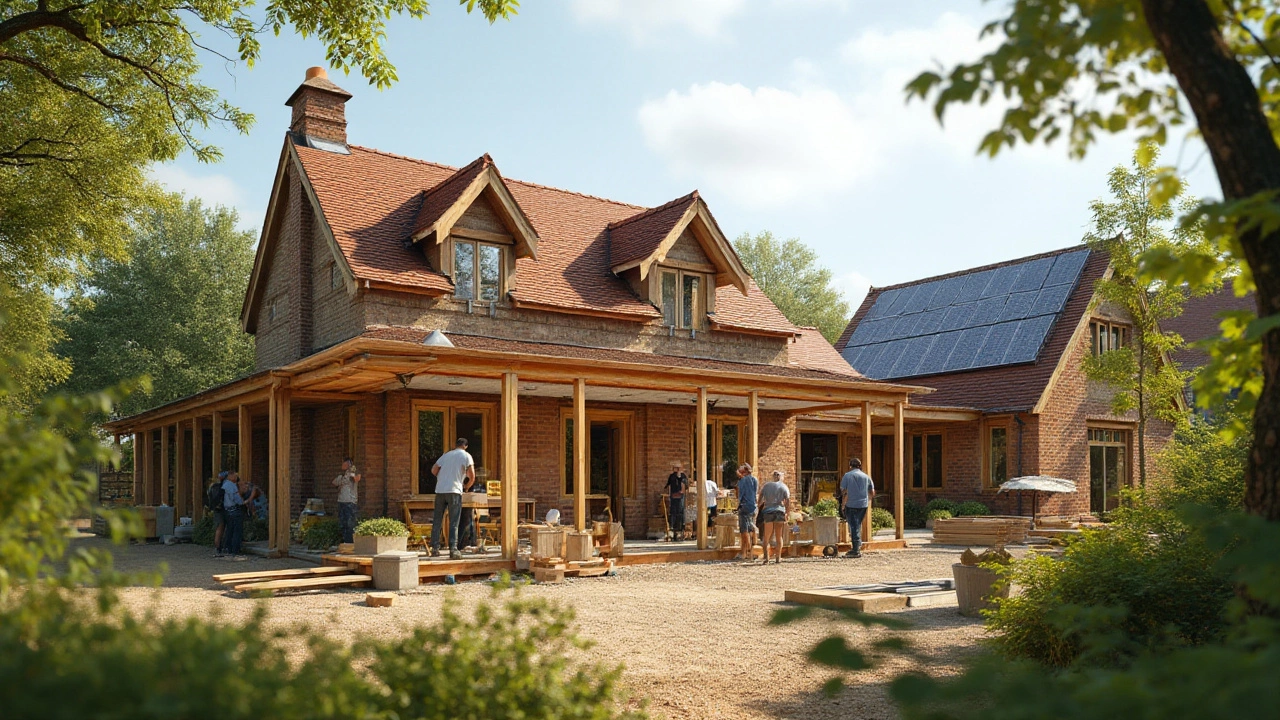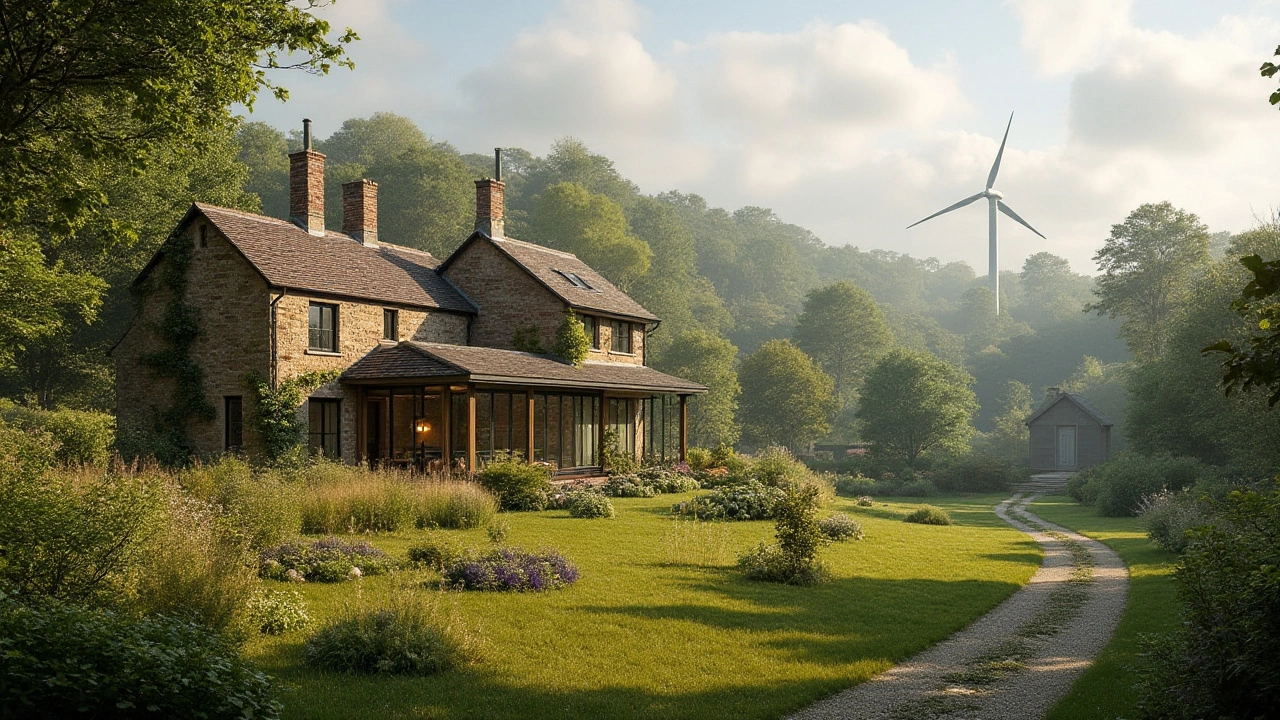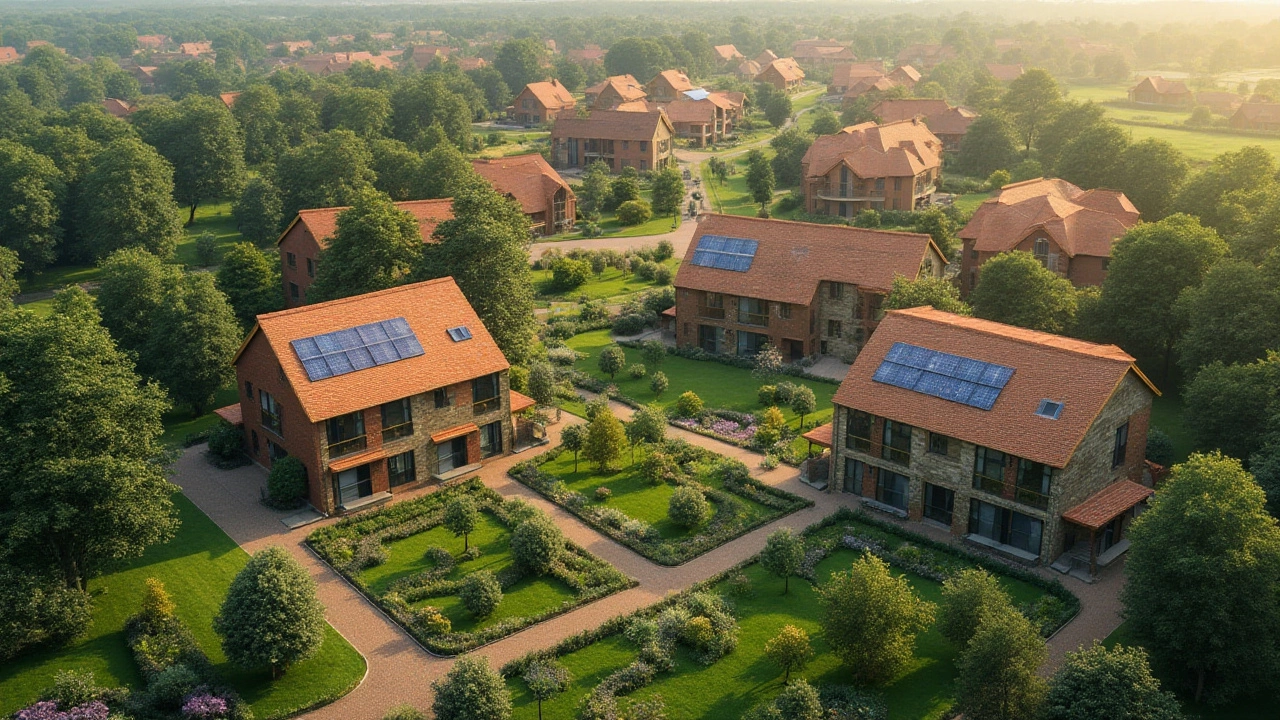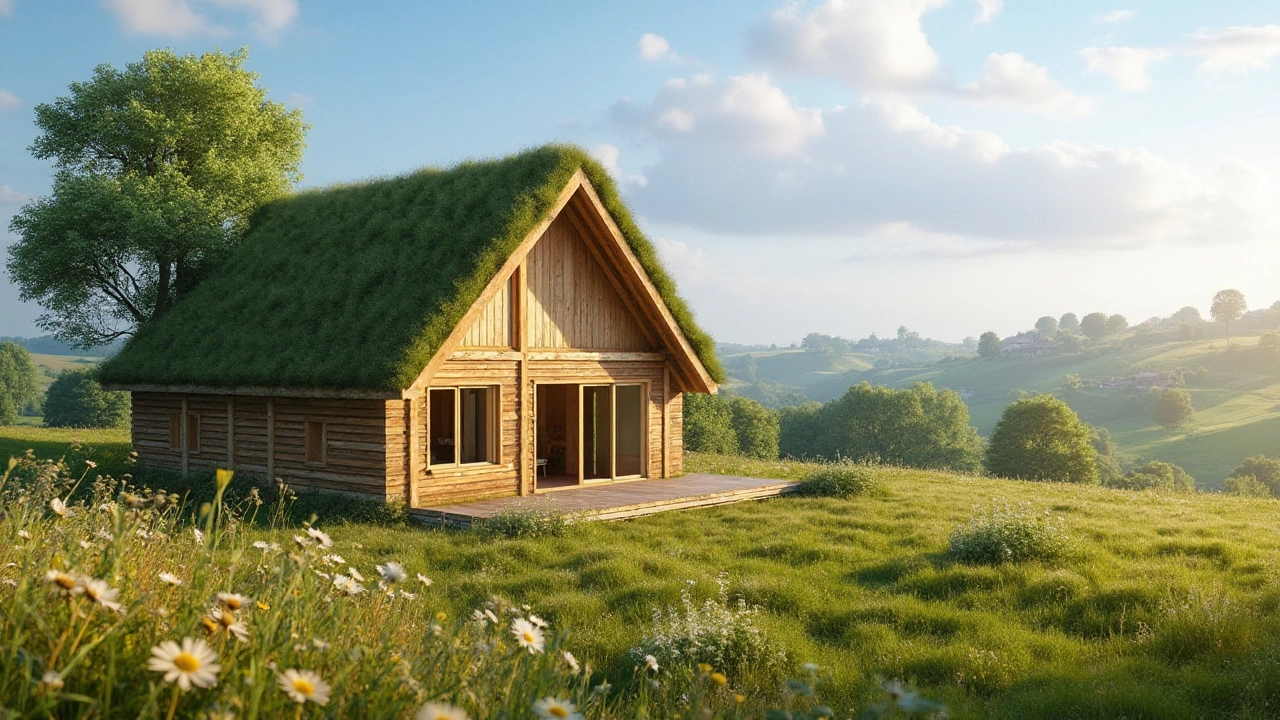Choosing a suitable spot for your eco-friendly home isn't just about the views from the kitchen window—it's a significant decision that can influence the sustainability and harmony of your life with the environment. With greener living on the rise, the focus on building houses that mesh beautifully with nature while minimizing their footprint has never been stronger.
The first step is to understand the climate of the area—this plays a vital role in deciding energy needs, building materials, and architectural design. Equally important is resource accessibility; proximity to renewable energy sources and sustainable materials can impact ongoing sustainability.
A community already invested in eco-friendly practices can also provide significant support. Picking a location with a strong emphasis on sustainability fosters not just your green home, but your eco-conscious lifestyle. Ultimately, the goal is to find a home location that balances comfort, efficiency, and respect for Mother Nature.
- Understanding the Local Climate
- Assessing Resource Accessibility
- Embracing Community Sustainability
- Balancing Nature and Modern Living
Understanding the Local Climate
Before laying the first eco-friendly brick, grasping the local climate is a decisive step for sustainable success. It's the local climate that quietly dictates many aspects of our homes, influencing both comfort and efficiency. While a sun-drenched, arid landscape might seem appealing visually, it demands inventive cooling solutions, ranging from natural ventilation to reflective roofing materials. Contrast this with a chilly northern setting, where thick insulation and passive solar designs take precedence to trap and make the most of precious sunlight.
Seasonal temperature variations impact energy needs significantly. In climates with extreme shifts, designing for passive solar heating or cooling can mitigate the need for non-renewable energy sources. Align your home's layout with the sun's path to maximize natural light during the day, cleverly reducing reliance on artificial lighting. Another vital element is rainfall patterns; drought-prone areas will benefit from rainwater harvesting systems, while those with heavy precipitation must plan for effective drainage and water management.
Wind patterns play an equally important role by impacting both heating and durability of buildings. Breezy locales can harness wind for natural ventilation and energy generation, providing cooling comfort while spinning turbines for electricity. Yet, high winds necessitate sturdy construction choices, protecting your haven from nature’s volatilities. Coastal areas often bring challenging salt-laden winds; hence, material selection should pivot towards corrosion-resistant options.
Considering the impact of altitude, as well, can surprise with its far-reaching consequences. Homes perched at towering heights face lower oxygen levels, often translating to lower temperatures and potential energy inefficiency. Experts recommend designs accentuating heat retention with higher insulation R-values and acclimatizing plants that thrive in thinner air. A more grounded approach involves solar panels and wind turbines at higher altitudes, where sun exposure and wind currents are generally more reliable.
"When we build, let us think that we build forever. Let's not be for present delight nor for present use alone; let it be for the world's future." — John Ruskin
Local flora and fauna also enter the equation; native vegetation not only complements your home aesthetically but supports biodiversity, enriching ecological health. Incorporating indigenous plants helps seal the harmony between culture and nature, potentially reducing invasive water and pest control measures. Understanding these subtle intricacies of your local climate can turn eco-friendly aspirations from a dream into a practical reality. The blueprint of your home, when tailored astutely, can hum in unison with the land and climate upon which it sits, turning it into a shining beacon of green architecture.

Assessing Resource Accessibility
When planning to build an eco-friendly house, understanding the availability of resources is a crucial piece of the puzzle. The placement of your sustainable home should ideally be in proximity to resources that will minimize the need for extensive transportation, thereby reducing your carbon footprint. Consider the accessibility to building materials such as sustainably harvested timber or recycled steel. Opting for local materials not only supports the local economy but significantly reduces transportation emissions. Checking for local suppliers beforehand can assist in planning and cost estimation, ensuring you stay on track with your eco-friendly ethos.
Availability of renewable energy sources around your chosen locale should also be a key decision-making factor. The closer you are to solar or wind energy resources, the easier it is to integrate these into your home. For those living in areas where the sun shines abundantly, implementing solar panels can offer a sustainable energy solution. Conversely, if you reside in a windy region, harnessing wind energy may be equally as efficient. It's worth noting that some areas may offer incentives or rebates for homes that adopt green energy solutions, providing both environmental and financial benefits.
An often overlooked but critical resource is water. Rainwater collection systems or access to natural water bodies can influence your home's design and functionality. In regions with high rainfall, rainwater harvesting can provide a steady supply of water, reducing dependency on municipal sources. Experts like John Smith from the Sustainable Living Institute highlight,
"Integrating natural water systems into home design aligns human needs with ecological preservation."Such wisdom echoes through every sustainable architectural ambition, urging homeowners to think beyond traditional resources.
In addition to natural resources, consider the potential for connecting with eco-conscious community services. Accessing green markets, organic farms, and like-minded sustainability initiatives can enhance not just your living standards but also connect you to a network of sustainable practices. In some areas, communities are taking bold steps towards creating shared resources, such as communal renewable energy projects and shared gardening spaces, offering almost a small-town feel amidst larger infrastructures.
Below is a simple benchmark comparison of eco-friendly resource availability:
| Resource Type | High Availability | Moderate Availability | Low Availability |
|---|---|---|---|
| Solar Energy | California | Texas | New England |
| Wind Energy | Iowa | Oklahoma | Florida |
| Rainwater | Pacific Northwest | Northeast | Southwest |
By examining these aspects, it becomes clear how vital the location is for achieving true sustainability. Beyond the dream of serene vistas lies the pragmatic pursuit of resource efficiency, a journey towards sustainable harmony with the earth.

Embracing Community Sustainability
When you choose to build an eco-friendly housing, it’s more than just constructing a home; it’s about joining a movement toward a sustainable future. To make a meaningful impact, consider the sustainability efforts already present in the community surrounding your prospective site. Communities that have adopted green practices not only provide support but also inspire ongoing improvements in your lifestyle choices. The integration into such a community means reaping benefits that go beyond the confines of your property—sharing, caring, and continuous learning becomes part of everyday life.
Eco-conscious towns often have initiatives focused on sustainable living, encouraging recycling, renewable energy use, and the conservation of natural resources. Learning about these programs provides insight into ways you can contribute to the collective environmental goals. These communities may have local policies offering incentives for energy-efficient designs, which can reduce the initial costs of building your own green architecture. The feeling of being part of a forward-thinking community, where everyone is on the same mission, fosters connection and empowerment. This unity can significantly enhance your personal commitment to sustainability.
Getting involved in local events and organizations dedicated to environmental causes is another way to engage with your new neighbors. Many communities have clubs or groups that promote environmental awareness through various activities. These events can be invaluable in educating oneself and others, as well as fostering friendships grounded in shared values. Studies have shown that humans are more likely to adopt sustainable practices when they see others around them doing the same. According to a survey from Pew Research, 83% of Americans believe that living an environmentally conscious life is important, suggesting that public opinion is increasingly supportive of these efforts.
In some areas, the community might have established open markets that allow local producers to sell organic and sustainably sourced foods. By choosing to support local businesses, you not only access fresh goods but also reduce your carbon footprint because of reduced transportation distances. Also, consider towns with community-supported agriculture (CSA) programs. CSA allows residents to subscribe and receive seasonal produce directly from farmers. This not only boosts the local economy but adds to the personal fulfillment of knowing exactly where and how your food is grown.
For those looking to immerse themselves even deeper, consider community-led social experiments like co-housing or eco-villages. These communities are often pioneers in sustainable building, creating spaces that are incredibly resource-efficient with shared common areas, gardens, and renewable energy systems. Joining such a place can be both an educational and transformative experience, giving you an intimate view into the future of communal living.
"Sustainability is no longer about doing less harm. It's about doing more good." - Jochen Zeitz
Ultimately, embracing community sustainability when selecting the location for your eco-friendly home means addressing the broader social fabric around you. By doing so, you not only support your goals towards more sustainable living, but you ensure that your efforts are bolstered in a meaningful and long-lasting way. So, as you consider where to lay the foundations of your eco-conscious home, don’t underestimate the impact and value that a like-minded community can offer.

Balancing Nature and Modern Living
In the quest to create harmoniously sustainable homes, blending the purity of nature with the advancements of modern living can present a rewarding challenge. Many eco-conscious individuals today are opting for designs and practices that not only prioritize energy efficiency but also respect and integrate the surrounding environment. Achieving equilibrium between nature and modern conveniences starts with the choice of the location itself—this decision should aim to preserve the existing landscape while enhancing the habitat through thoughtful, eco-friendly design. For instance, architects often recommend the construction of eco-friendly housing using local and renewable materials, which reduces transport emissions and supports local economies.
One notable approach includes the use of passive solar design, which strategically positions the home to optimize heating from the sun during winter months while avoiding excess heat in the summer. This method can dramatically reduce energy consumption, making it a popular choice among those committed to sustainable building practices. Homeowners can also consider green roofs or living walls, which not only provide insulation but also contribute to local biodiversity by attracting birds and insects. Such features enhance the natural beauty while serving practical environmental benefits.
"Sustainable architecture not only minimizes negative impacts on the environment but can also enhance productivity and improve the quality of life," says William McDonough, a renowned leader in ecological design.
Below is an example of how balancing nature with modern life can manifest through thoughtful design:
| Feature | Eco-Benefit | Modern Convenience |
|---|---|---|
| Geothermal Heating | Reduces reliance on fossil fuels | Consistent indoor temperature |
| Rainwater Harvesting | Conserves water resources | Cost savings on water bills |
| Sustainable Insulation | Improves energy efficiency | Lower heating and cooling costs |
Integrating technology with sustainable goals presents additional opportunities, such as smart home systems that track and optimize energy use, or solar panels coupled with battery storage to ensure the house remains powered even during outages. Thoughtful placement of windows can harness natural light, reducing the demand for artificial lighting during the day, while enhancing living spaces with a touch of nature.
Finally, it's important to remember that balancing nature and contemporary life isn't merely an ethical choice but a practical one that can result in less maintenance and utility costs in the long run. As we embrace modern technology, ensuring sustainable building practices today shapes a healthier planet tomorrow. Such endeavors not only reflect an environmental consciousness but also enhance wellbeing, providing sanctuary where residents can reconnect with nature's beauty in an increasingly industrialized world. Such spaces foster peace, inspiring people to make mindful choices affecting the broader community positively.
